Hello and welcome to my first proper guest post on Local is Lovely! And I am so proud that we are kicking off with such a goodie. Emiko Davies is like blogging royalty to me. An experienced and professional photographer and journalist; her blog is the best of its kind. Always full of wonderful images, recipes and words bound together by Emiko’s contagious love of what she does. Here below, she shares some images and words from a recent truffle hunt she attended close to her home town of Canberra (though she is only recently back from a seven year stint in Tuscany with her Italian Husband). She’s also written and photographed for us, a couple of recipes showcasing black truffles, which are in season (if not somewhat out of most budgets, right now). The good news is, as Emiko says, you really only need a very little taste to understand what all the fuss is about. And as our local trufferies here in the Central West are digging them up right now, I’m thinking about going halves or thirds in one with a friend. Anyone keen? But back to Emiko. Please, grab a cup of tea and take five minutes for a bit of a read…Thank you Emiko!
I’ve had the fortune of becoming well accustomed to truffles. My first proper experience was visiting the town of San Miniato, just a little outside of Florence. It’s a pretty hilltop town surrounded by a beautiful hilly and wooded area, famous for its abundance of the very rare and really incomparable white truffle. Every November they have a truffle festival that lasts about three weeks and the entire town is taken over by the scent of truffles. A couple of months later, I met the man who is now my husband in Florence and it turned out he was born in San Miniato. So a love of truffles naturally runs through him. Naturally, we never missed a truffle festival.
Then, here in Australia, I had the pleasure of researching Australian black truffles for The Locavore Edition’s Field Guide to NSW Produce and came into contact with the Marshall family from Terra Preta Truffles in Braidwood. The Marshalls, Kate and Peter, invited me around for a hunt last year and afterwards treated me to a wonderful home cooked truffle meal. It was unforgettable. Quite a different experience to Italy but unforgettable nonetheless. I went back again recently, for another hunt, this time as part of the Canberra Truffle Festival and research for Food & Wine liftout of The Canberra Times and it was just as good as I remember, but this time they also introduced me to another fantastic local family run business — a cider making Welsh family who prepared us a truffle lunch. But back to the truffle hunt.
Possibly the best part of the hunt is watching the hunters themselves at work. The dogs, that is. There’s something I find quite fascinating about the fact that we humans aren’t able to find truffles on our own. Dependent upon the nose of a well-trained dog (or a pig, as it used to be), truffles need to be expertly sniffed out. Shadow, a slippery little black dog, and Sal, a golden retriever, are experts, but watching them with Kate Marshall and her youngest daughter Rita, it’s pretty clear that there’s something special at work in this partnership between dog and handler.

The truffle hunt is just as exciting as finding buried treasure. Following the dogs’ lead in the patch of carefully curated hazelnut and oak trees, Kate and Rita begin carefully shifting around dirt until, like the tip of an iceberg, the top of a truffle is revealed. It is excavated and wiggled out while the dogs patiently wait for their reward. The heady scent of damp earth and earthy truffle mingles in the cold, crisp air. It’s certainly a good way to work up an appetite. Luckily, not far away, the Sully-Watkins family over at Sully’s Old Cheese Factory are preparing us lunch.

The specialty over at the Old Cheese Factory is not cheese, as you might think, but cider. The Sully-Watkins family have done a really beautiful thing, reviving a historical industry of Braidwood (cider making! Who knew?) with their own Welsh heritage, scouring the area for heritage trees, brought over with the early settlers of the area. In the meanwhile, they have dug up some very interesting local history and produced some truly artisanal ciders.
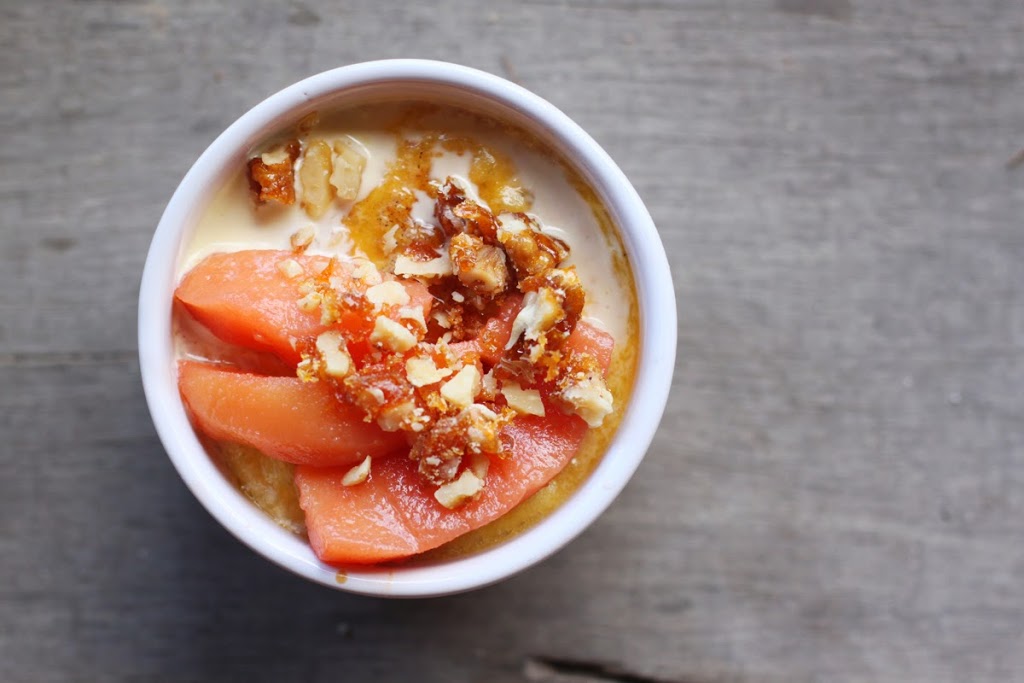
They are passionate about sourcing and supporting local Braidwood produce and it makes all the difference. With Gina in the kitchen, brother Gary making the cider, and parents Bob and Margaret helping out, it’s a whole family affair. We’re welcomed out of the cold with some of their hot mulled cider, a treat made with their heritage cider apples. For lunch, Gina has cooked up a vegetable soup with truffle pesto and divine individual pies made with local free-range chicken, their own champagne cider and truffles. For dessert, she made truffle rice pudding with poached quince and candied walnuts (pictured above) followed by handmade white chocolate truffles (with truffles!).
Truffles are easy to use in the kitchen. A couple of tips I have are:
- Don’t be intimidated about using truffles – although they may be a bit pricey (this is because of their extreme seasonality and their rareness, along with the fact that they’re not the easiest things to find!), they go best with really simple, humble dishes.
- Go all out – don’t try to save little bits of truffle to make it last longer. Use the truffle at its freshest as it will lose aroma (and weight) day by day.
- Probably the best way to savour it is simply shaved or grated fresh as a garnish, allowing the warmth of the dish to bring out the aroma. This is better than cooking it, as it will lose its most potent aroma with too much heat.
- The simpler the better. Truffles pair wonderfully with ingredients such as eggs, potatoes, cheese, butter and cream – things like potato mash or a good old fondue are great with a grating of truffle over the top. I like to make my own truffle butter (recipe below) and use it to dress some fresh egg pasta or scrambled eggs.
If you get the chance, go on a truffle hunt so you can see what all the fuss is about!
The Canberra Truffle Festival continues until the end of August. Terra Preta farm conducts truffle tours on Sundays or their truffles can be found at the Capital Region Farmers Market at EPIC on Saturday mornings until the end of the season. Sully’s Old Cheese Factory is open by appointment or for cider tastings on Sundays only.
Truffle butter
Truffle butter is a wonderful way to savour your truffle and also to keep it lasting longer. It can pretty much be used for anything and makes everything taste better! Stir through mashed potatoes, polenta, pasta or scrambled eggs. Or perhaps serve it on top of grilled steak. It’s just wonderful to eat on fresh bread too. You can cheat by simply combining a softened, good quality, cultured butter with grated truffle, but making your own cultured butter at home is easy and fun – I was inspired by this video from Pepe Saya on how to do it. Just keep in mind that it doesn’t keep as long as commercial butter; use it within a week.
500 grams creme fraiche
about 20 grams grated truffle
a good pinch of salt flakes
Whip the creme fraiche in a deep bowl (you can use a stand mixer or hand mixer) until it splits, forming buttermilk and the solids begin to look like “popcorn”, about 5-8 minutes.
If you want to keep the buttermilk, prepare a strainer by lining it with muslin or a clean linen tea towel and place over a bowl. Pour off the buttermilk through the strainer and place the butter in the muslin, pressing the butter to squeeze as much liquid as you can out of it. Pour the buttermilk into a jar and keep in the fridge.
Place the butter in the bowl the buttermilk was in and rinse it with about half a cup of ice cold water, pressing the butter against the sides of the bowl to squeeze out the liquid. Pour off the liquid and add more cold water, pressing the butter and repeating until the liquid that comes out is clear, not cloudy.
The butter should now be firm and mould-able and at this point you can add salt and the grated truffle. Knead with your hands to combine well, then shape in a log or a wheel and wrap in baking or greaseproof paper. Keep in the fridge and use up to a week. You can also freeze it.
Truffle pannacotta with poached pears and dark chocolate
Pannacotta is a really delicate dessert that lends itself well to little adaptions, in this case being perfumed by black truffles. I do think it’s worthwhile infusing the pears with some truffle too if you want to make the most of this truffle dessert (I’d put a few slices of truffle in the pot once you have taken off the heat and leave to infuse like a tea until you need to serve them) but otherwise plain or half a vanilla pod is quite nice too.
A note on the gelatin – I prefer using leaf gelatin (I find it’s a more neutral flavoured option and there’s less risk of any lumps) over powdered gelatin but you can use either. The conversions between the two are notoriously controversial and depending on what you read you might get different answers. However, I’ve found that this works well with about 2 ½ teaspoons of powdered gelatin.
Note that the truffle ends up floating to the bottom so if you upturn them, you get to see the pretty speckled truffles on top. If flipping the pannacotta intimidates you, you can also set these in ramekins (or even little tea cups) and present them as is, so no flipping is required but you won’t see the truffle until you get to the bottom!
Serves 6
2 small pears
175 grams sugar
375 ml cream
125 ml milk
2 tablespoons finely grated truffle
3 leaves of gelatin (about 6 grams)
50 grams dark chocolate, chopped finely
Peel and slice the pears first into quarters then each quarter into three pieces.
Heat about 500 ml water with 100 grams of sugar until the sugar is dissolved. Add the pears and bring to a simmer. Cook until the pears are soft and cooked through, about 15 minutes. Remove from heat and set aside until the pannacotta are ready for serving.
For the pannacotta, place the cream, milk and the rest of the sugar in a saucepan and heat until the sugar is dissolved. Don’t let the mixture boil. Remove from the heat. In the meantime, soak the gelatin leaves in cold water for about 5 minutes or until softened.
Take the gelatin leaves out of the water and squeeze out any excess liquid. Add to the warm cream mixture and stir to dissolve the gelatin. Add the truffle and stir to combine. Pour the mixture into a 6 cup silicon muffin tray or 6 small ramekins. Refrigerate until set, a few hours.
To serve, remove the pannacotta from fridge about 30 minutes before serving. If you have used the silicon muffin tray and you are upturning the pannacotta, slide a knife around the edge of the pannacotta carefully then dip the bottom of the tray momentarily in warm water to loosen and then carefully tip the pannacotta out onto plates one by one. If using ramekins you can serve as they are in the ramekin. Serve with slices of poached pear, drained, and a sprinkling of chopped dark chocolate.
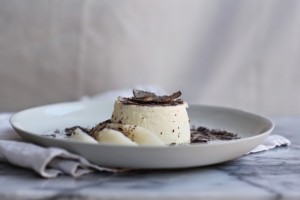
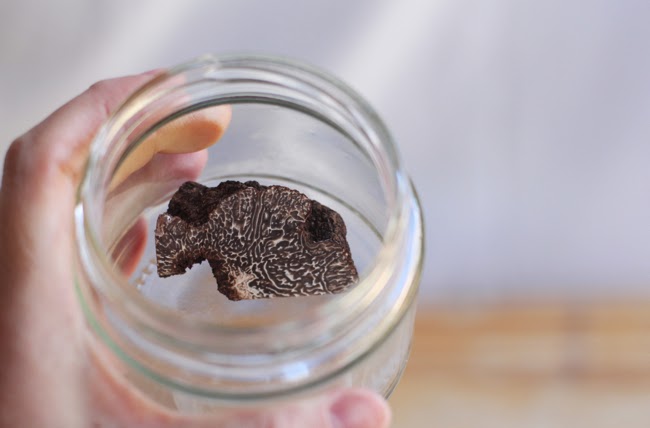

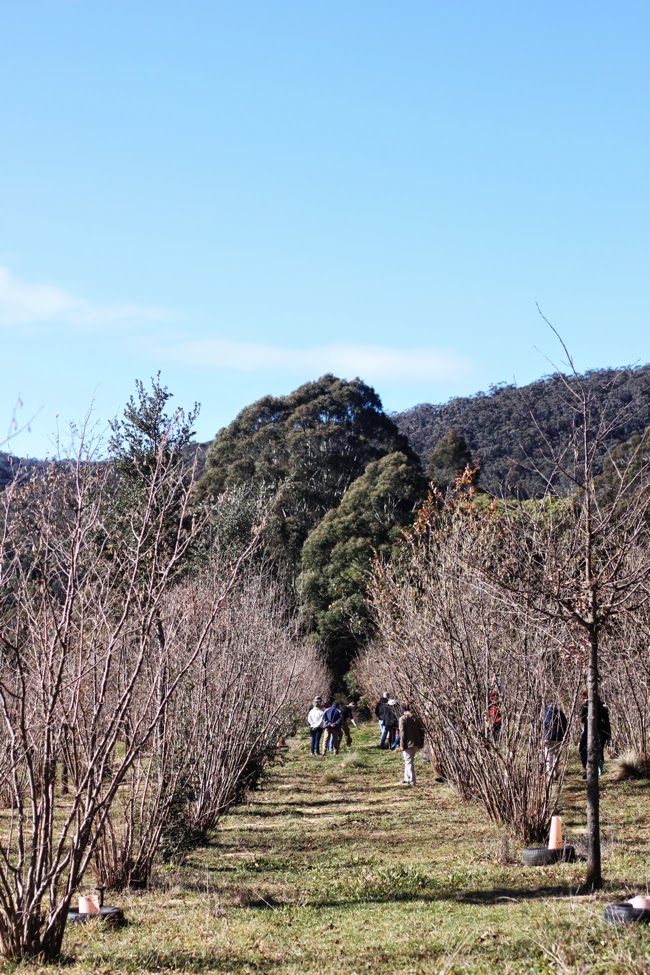
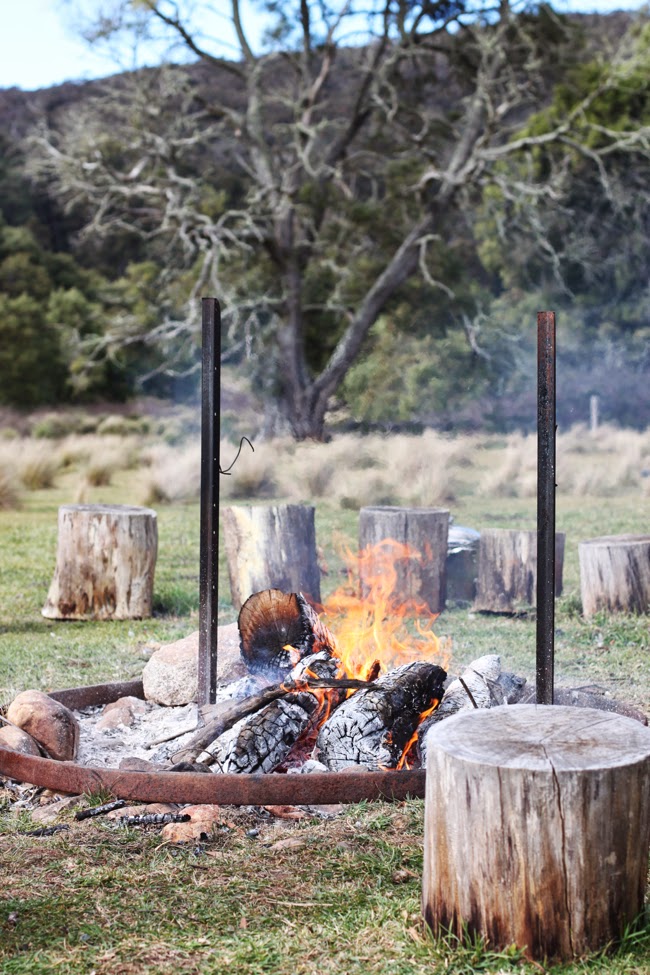
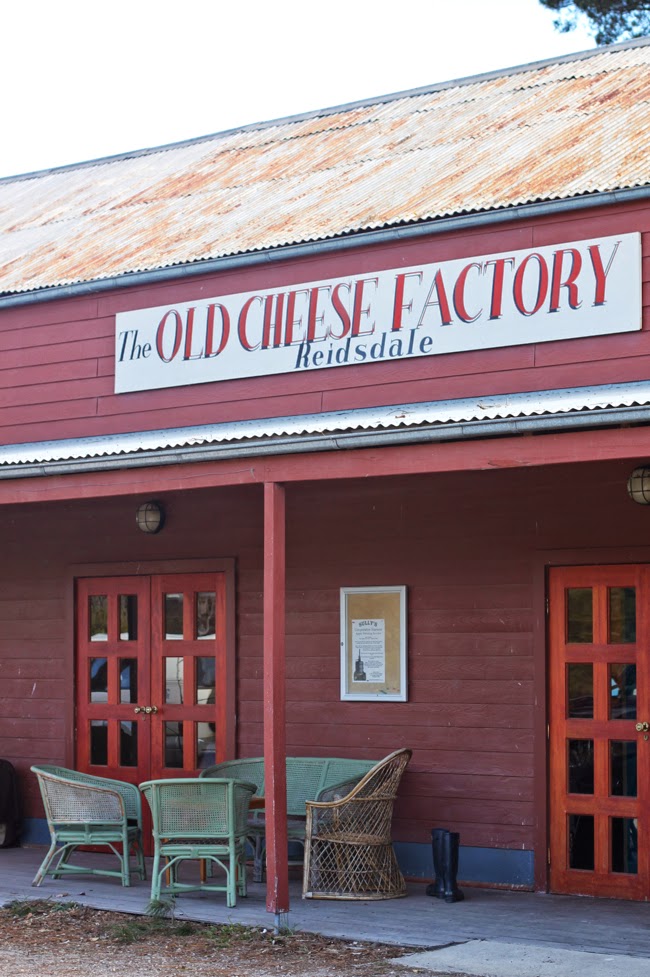
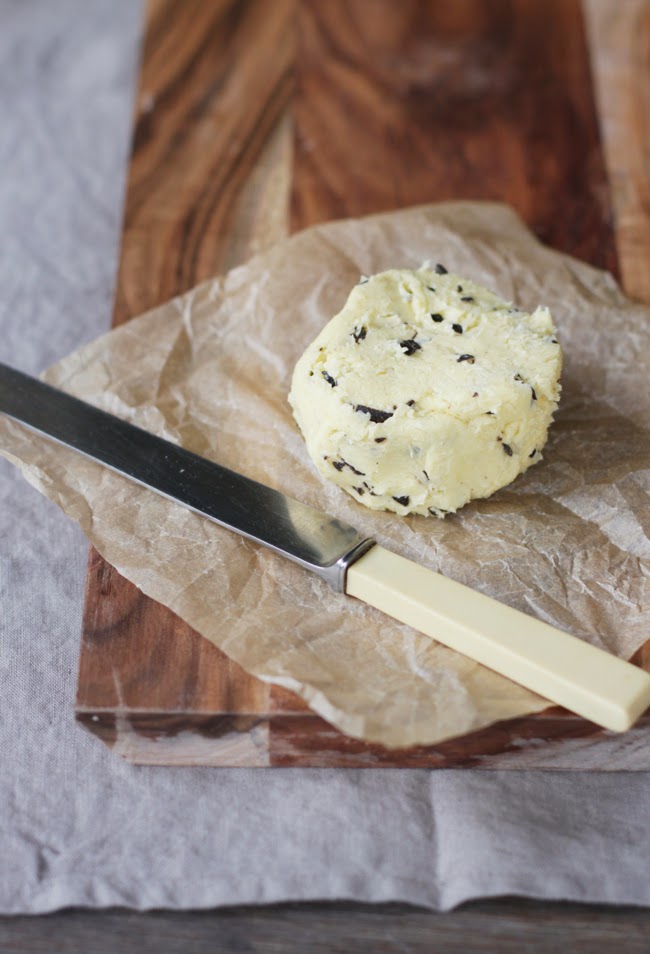
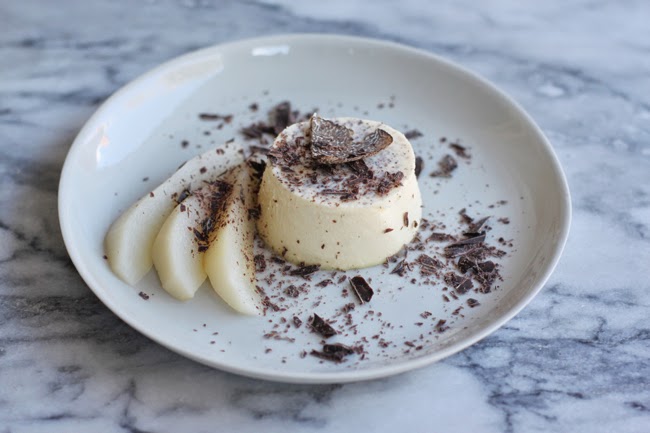

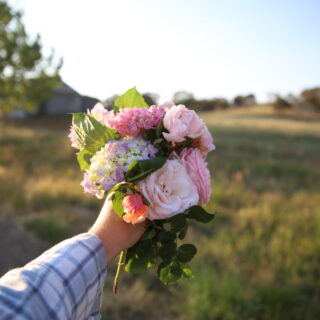
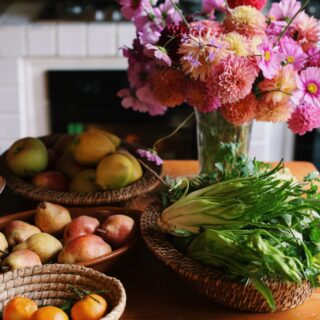
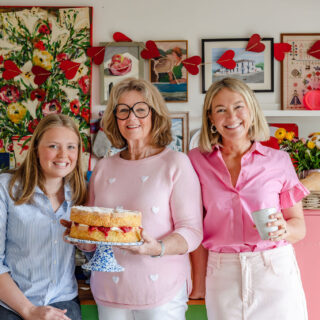
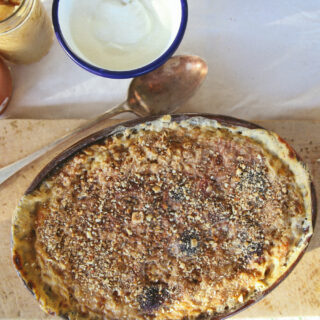

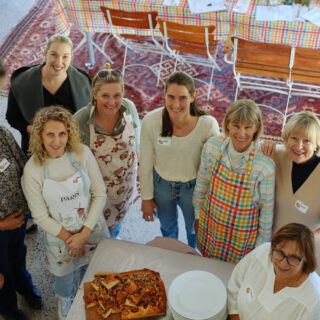
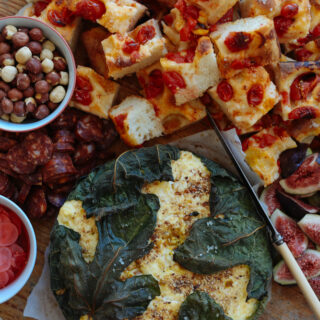

One of the finest, most memorable meals I ever shared was an almost-friend’s truffle dinner party. An impromptu invitation, a room of interesting creative types, a banquet where every course featured truffles in some clever way. I am still there, in that candlelit room, feeling divinely cared for. Almost-friend became always-friend in just one meal.
And yes, AMAZING! x
Bron – that sounds like the most incredible meal. Lucky you! I love it when you make friends over meals – always a good start I reckon! Sx
Beautiful!! I love truffle season in Canberra (despite the cold). I love how alive the whole town gets about it’s special ingredient. So many yummy menus about in town! Delicious. x